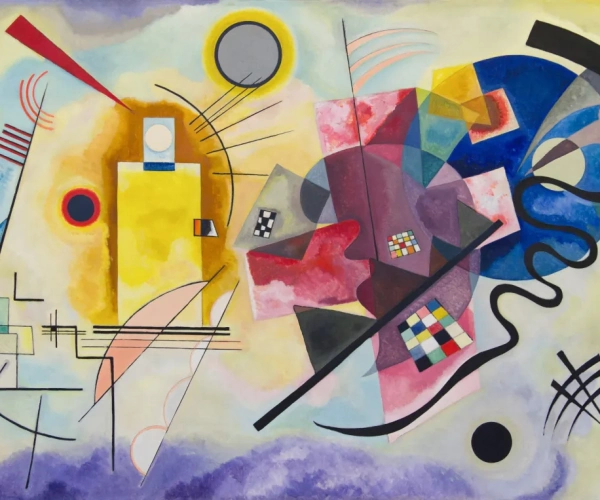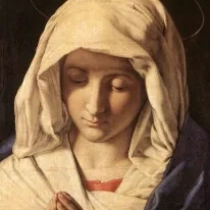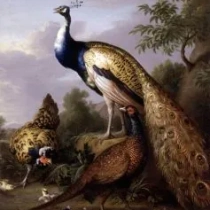Yellow Red Blue
"Yellow Red Blue" (1925) by Wassily Kandinsky is a seminal work that captures the essence of abstract art and is a profound representation of Kandinsky's theories on colors and shapes. As a pioneering figure in abstract art, Kandinsky believed that colors and forms had inherent spiritual values and could evoke specific emotional responses. This painting is a vivid embodiment of these ideas, showcasing his innovative approach to visual composition.
"Yellow Red Blue" features a complex array of geometric and organic shapes, intersecting and overlapping against a muted background. The primary colors – yellow, red, and blue – are prominently displayed, each evoking different feelings and reactions as per Kandinsky's color theory. Yellow, with its sharpness and brightness, contrasts with the depth and coolness of blue, while red offers a dynamic balance between the two.
Kandinsky's arrangement of shapes and colors in the painting is not random but a deliberate attempt to communicate deeper emotional and spiritual truths. The straight lines, circles, and angular forms interact in a way that creates a sense of rhythmic movement, drawing the viewer into a deeper contemplation of the work. This interaction of form and color is intended to resonate with the viewer's inner emotions, evoking a response that transcends the visual experience.
The influence of Kandinsky's involvement with the Bauhaus school during the time he painted "Yellow Red Blue" is evident. The Bauhaus philosophy of combining art with functionality and the emphasis on basic geometric forms influenced Kandinsky's stylistic evolution. In this painting, his use of geometric abstraction is a move away from his earlier, more fluid and organic style, reflecting his ongoing exploration of the potentials of abstract art.
"Yellow Red Blue" is not just a painting; it is a visual language. Kandinsky uses this language to communicate ideas that are fundamentally abstract and cannot be expressed through traditional representational art. The painting invites viewers to delve into their own perceptions and emotions, making each encounter with the work a unique experience.
In summary, "Yellow Red Blue" is a quintessential Kandinsky, encapsulating his innovative ideas about color theory, abstraction, and the emotional power of art. It stands as a testament to Kandinsky's vision and his lasting influence on the course of modern art, challenging and expanding the boundaries of how art is perceived and experienced.







No Comments Yet...